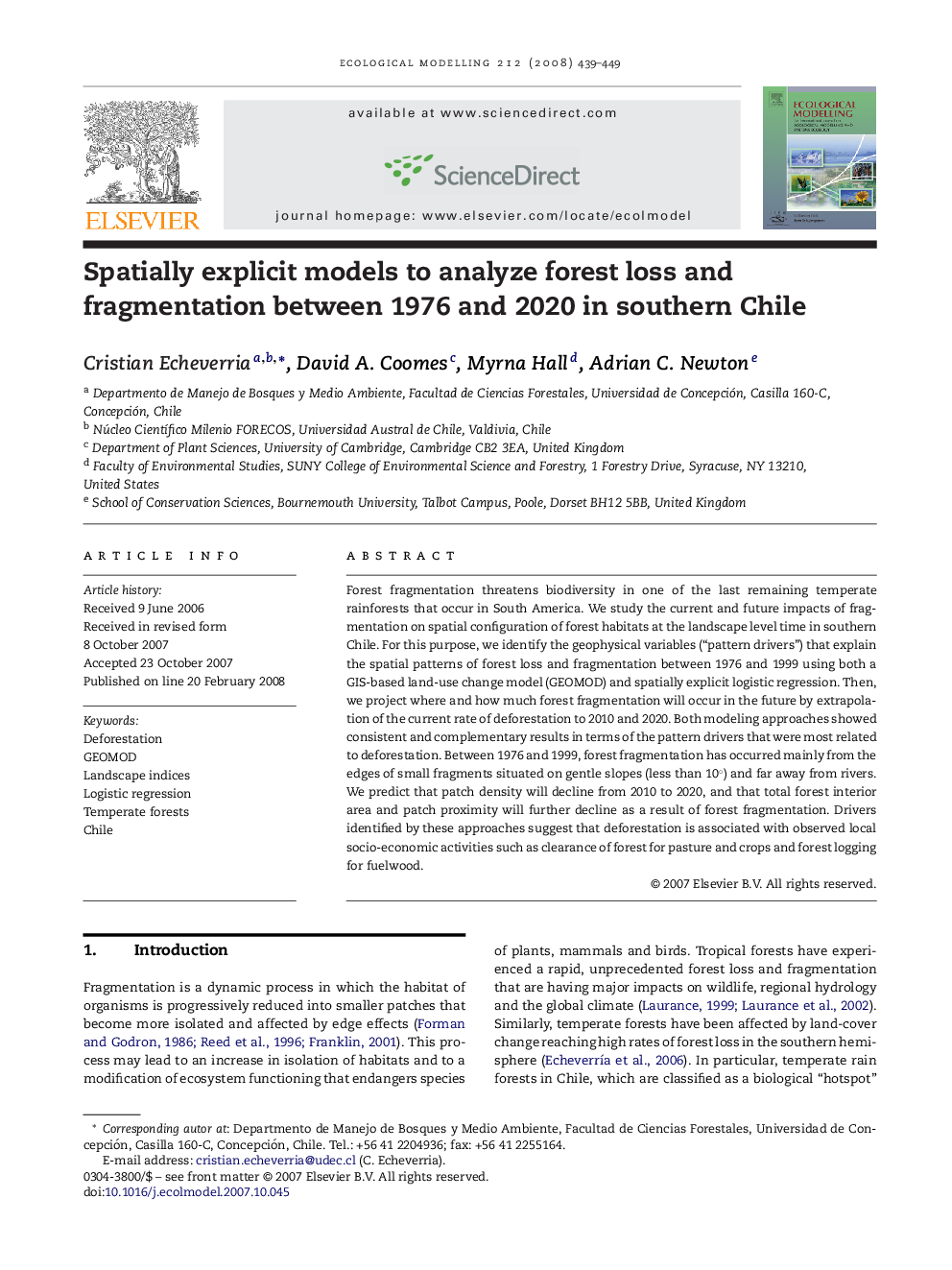| Article ID | Journal | Published Year | Pages | File Type |
|---|---|---|---|---|
| 4378321 | Ecological Modelling | 2008 | 11 Pages |
Abstract
Forest fragmentation threatens biodiversity in one of the last remaining temperate rainforests that occur in South America. We study the current and future impacts of fragmentation on spatial configuration of forest habitats at the landscape level time in southern Chile. For this purpose, we identify the geophysical variables (“pattern drivers”) that explain the spatial patterns of forest loss and fragmentation between 1976 and 1999 using both a GIS-based land-use change model (GEOMOD) and spatially explicit logistic regression. Then, we project where and how much forest fragmentation will occur in the future by extrapolation of the current rate of deforestation to 2010 and 2020. Both modeling approaches showed consistent and complementary results in terms of the pattern drivers that were most related to deforestation. Between 1976 and 1999, forest fragmentation has occurred mainly from the edges of small fragments situated on gentle slopes (less than 10°) and far away from rivers. We predict that patch density will decline from 2010 to 2020, and that total forest interior area and patch proximity will further decline as a result of forest fragmentation. Drivers identified by these approaches suggest that deforestation is associated with observed local socio-economic activities such as clearance of forest for pasture and crops and forest logging for fuelwood.
Related Topics
Life Sciences
Agricultural and Biological Sciences
Ecology, Evolution, Behavior and Systematics
Authors
Cristian Echeverria, David A. Coomes, Myrna Hall, Adrian C. Newton,
